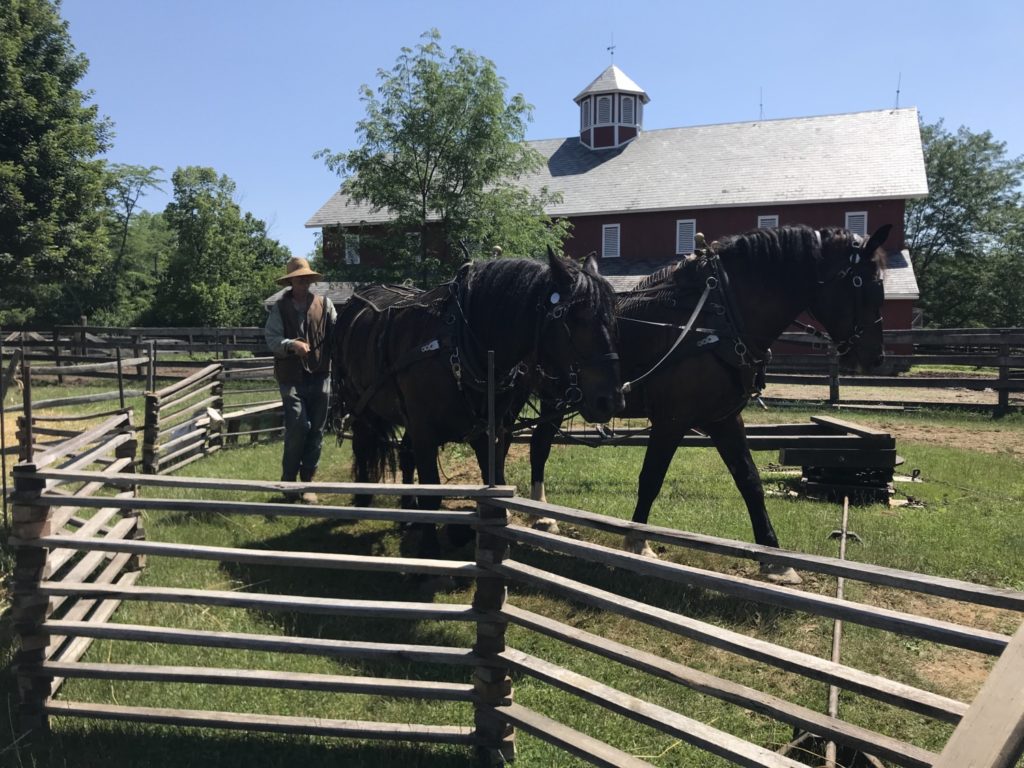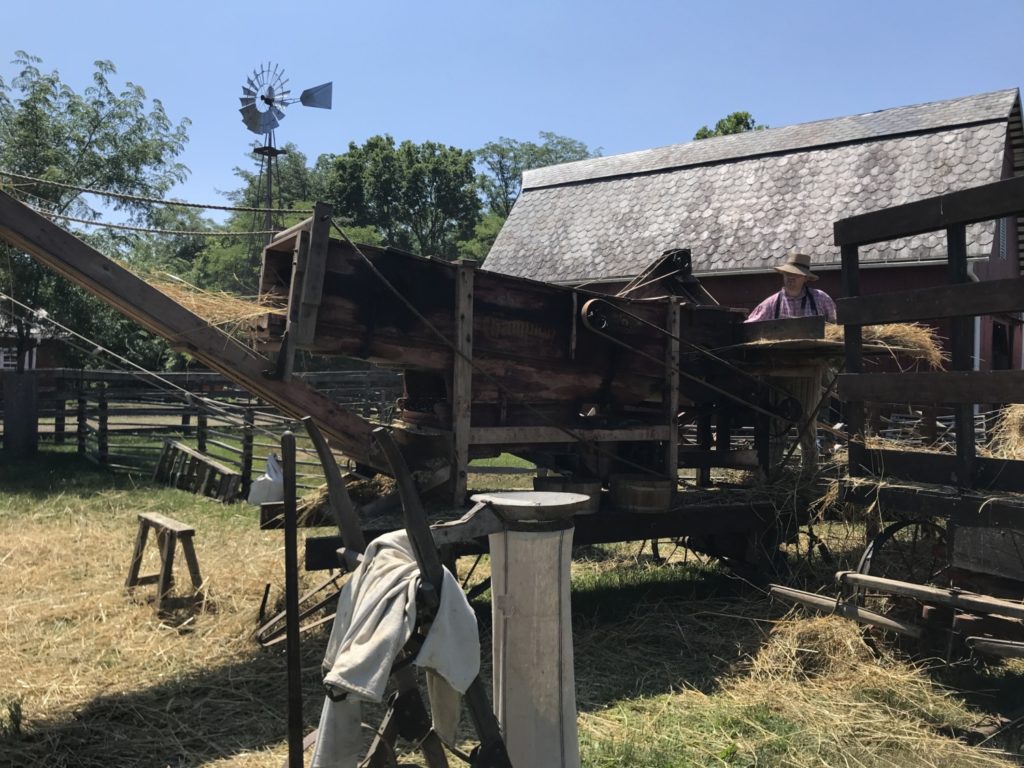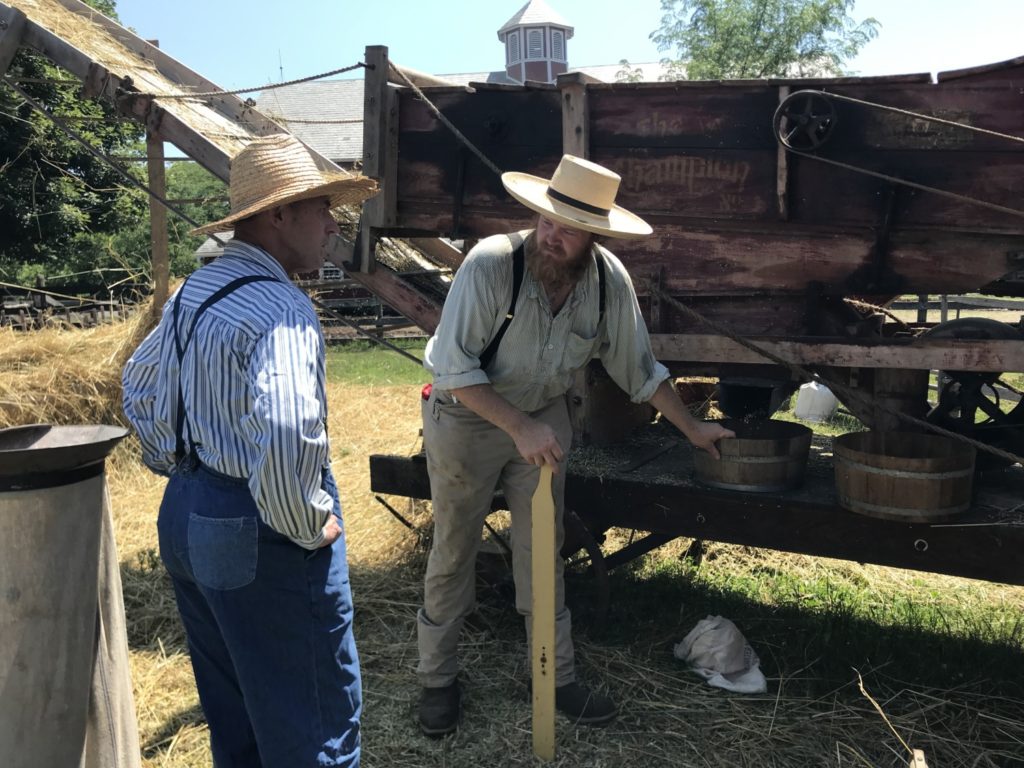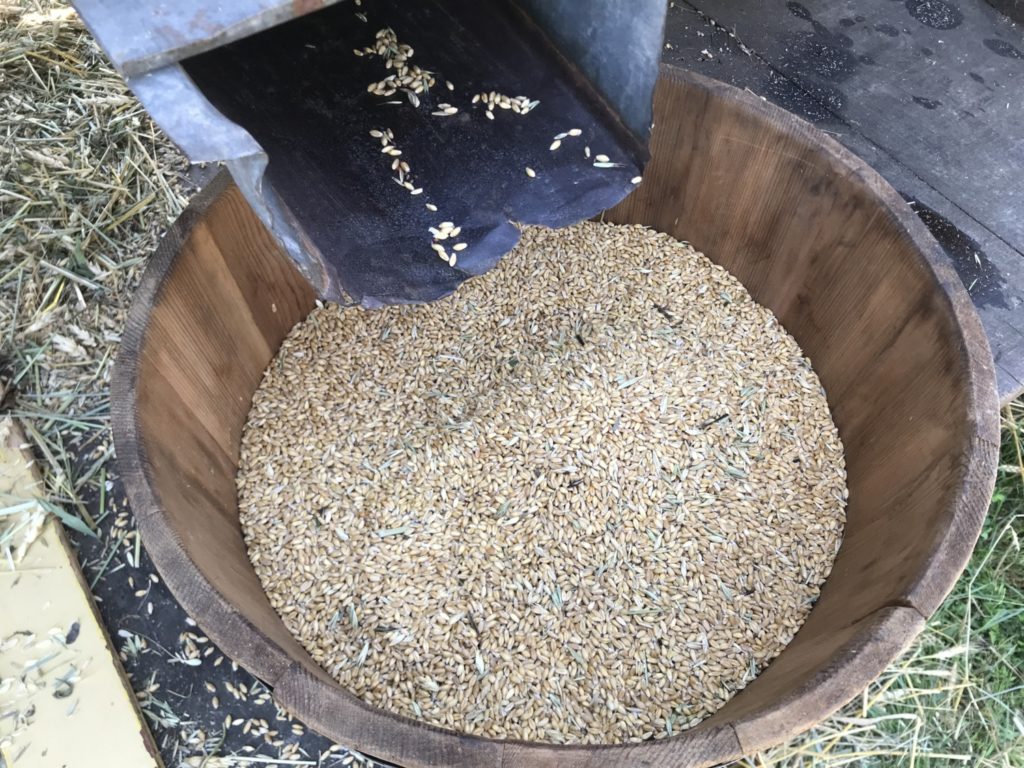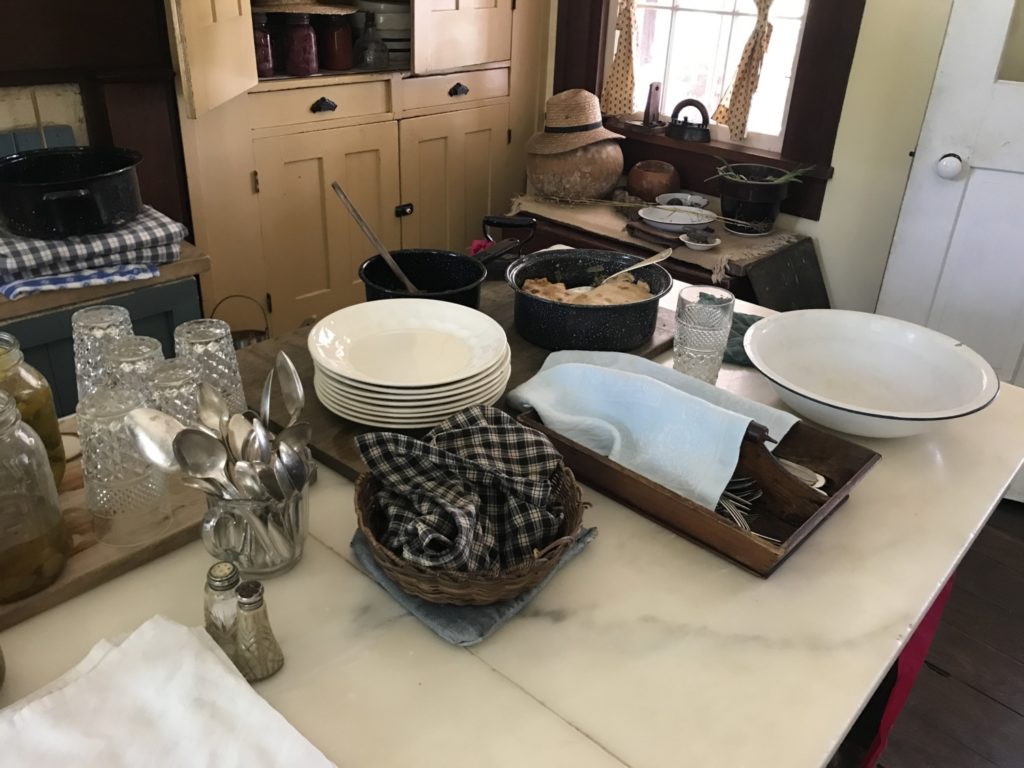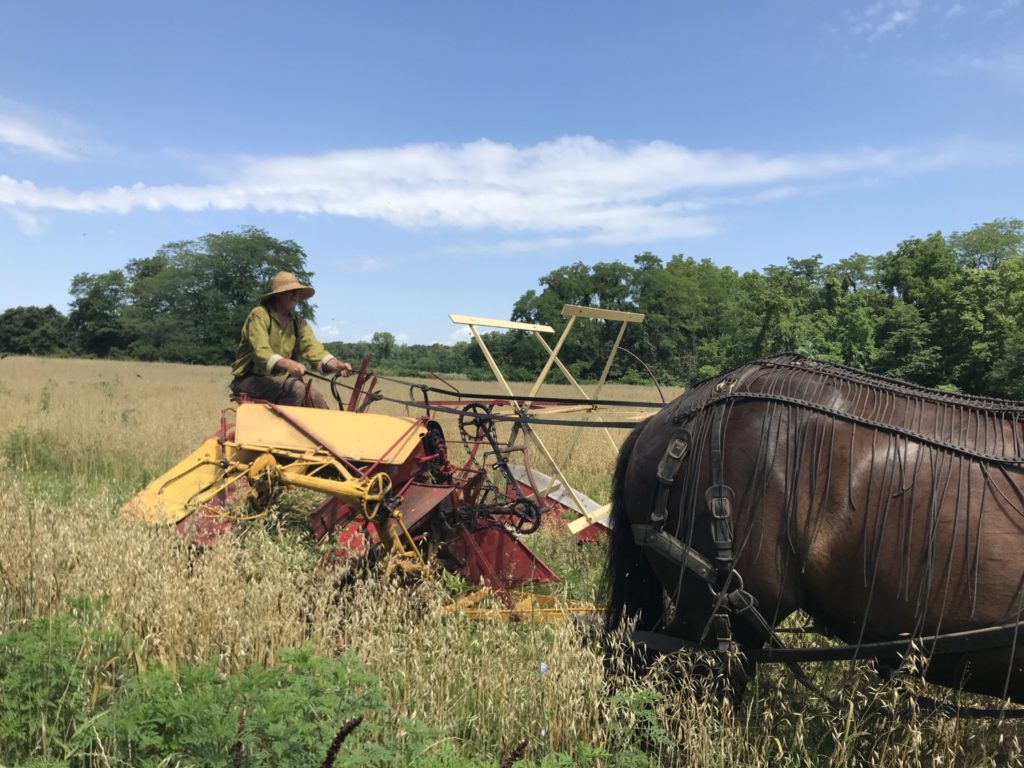As you may have suspected, Tom and I signed up for volunteering at Slate Run Living Historical Farm. We enjoyed the farm when we visited, and decided we would like to try volunteering there. We can do living history without traveling far away. And we get to learn a new time period: 1880 – 1900.
Before we could be approved for volunteering at Slate Run, we had to have a background check. This took several weeks as they went through our references. Once the references checked out, we were allowed to do a “dress trial day.” We would dress up and participate in the farm’s activities to be sure it was a good match for us. Ann Culek, our boss at the farm, says they have a lot of people who get through all the background check, volunteer one day, find out how hard they have to work, and never come back. Because of this, the farm now has a trial day before they do the final stage of the background check.
Once we had our dress trial day and still wanted to volunteer, we went to the Metro Park headquarters and got fingerprinted. The process didn’t take long and our background check was approved quickly after that.
Tom and I have now volunteered three days, including our dress trail. The farm has six full-time staff, three men and three women. The men are in charge of the farming and livestock. The women take care of the house, food, garden, and chickens. This is the way the labor would have been divided in 1880 so it is the way we do it as staff and volunteers.
Our first day was a big event on the farm: threshing. The farmers had harvested the first cutting of wheat and were separating the grain from the rest of the plant. They did this work on a Sunday because that is when they could get all the staff and a good group of volunteers to the farm. Historically, the farm family would never have done threshing on a Sunday. Tom jumped right in helping with the threshing, and I worked in the kitchen.
We had a big meal that first day with 10 men eating first. The women had been busy all morning, and the previous days, preparing the food. There was meat loaf, pork roast, potatoes, carrots, biscuits, pears, applesauce, green beans, pickled beets, pickles, apple pie and blueberry cake. Most of the food came from food that had been grown and processed on the farm. After the men ate and returned to work, the women did the first set of dishes, and then sat down to our own meal. It was the only time we sat down the entire day.

The threshing was noisy and hot work but went quickly. After the women got the food and dishes put away, we went out to help as well. I helped Tom make straw bales out of the straw left over after the wheat was separated. We ended up with three bushels of wheat and about 20 bales of straw. I used a pitchfork to move the straw from the big pile under the thresher to the baler. A lot of straw goes into each bale. I asked one of the farmers if there was a trick to using the pitchfork, and he said, “Practice!”
The second day we volunteered was harvesting the oats. I spent the morning working in the kitchen, but I had a chance to watch the harvesting for a while. Because the farm has 1880’s equipment, they have a horse-drawn binder that cuts the oats and bundles them into sheaves which are stacked into shocks. The binder was definitely faster than harvesting with a scythe. Tom got hot and sweaty stacking the sheaves. He had oats stuck everywhere!

After I finished with the dishes after lunch, I helped Tom bale some more straw while the staff started threshing the oats. Tom and I got about four bales tied in an hour. Baling seems to be a never-ending task and there is a big pile of straw waiting for us to continue when we have time.

Our third day volunteering, the threshing was finished, so we did some more common chores. I learned how to light the wood stove. I made the biscuits for lunch while Donna, one of the staff, made the sausage and gravy for over them. We cook on the farm every day, which mean there are always dishes to do. I know all the steps for doing dishes, and the other ladies let me be in charge of keeping the wood stove going. After the dishes were done, I made crackers. Just like biscuits only much thinner. I am gradually learning where things are stored in the kitchen and the house.
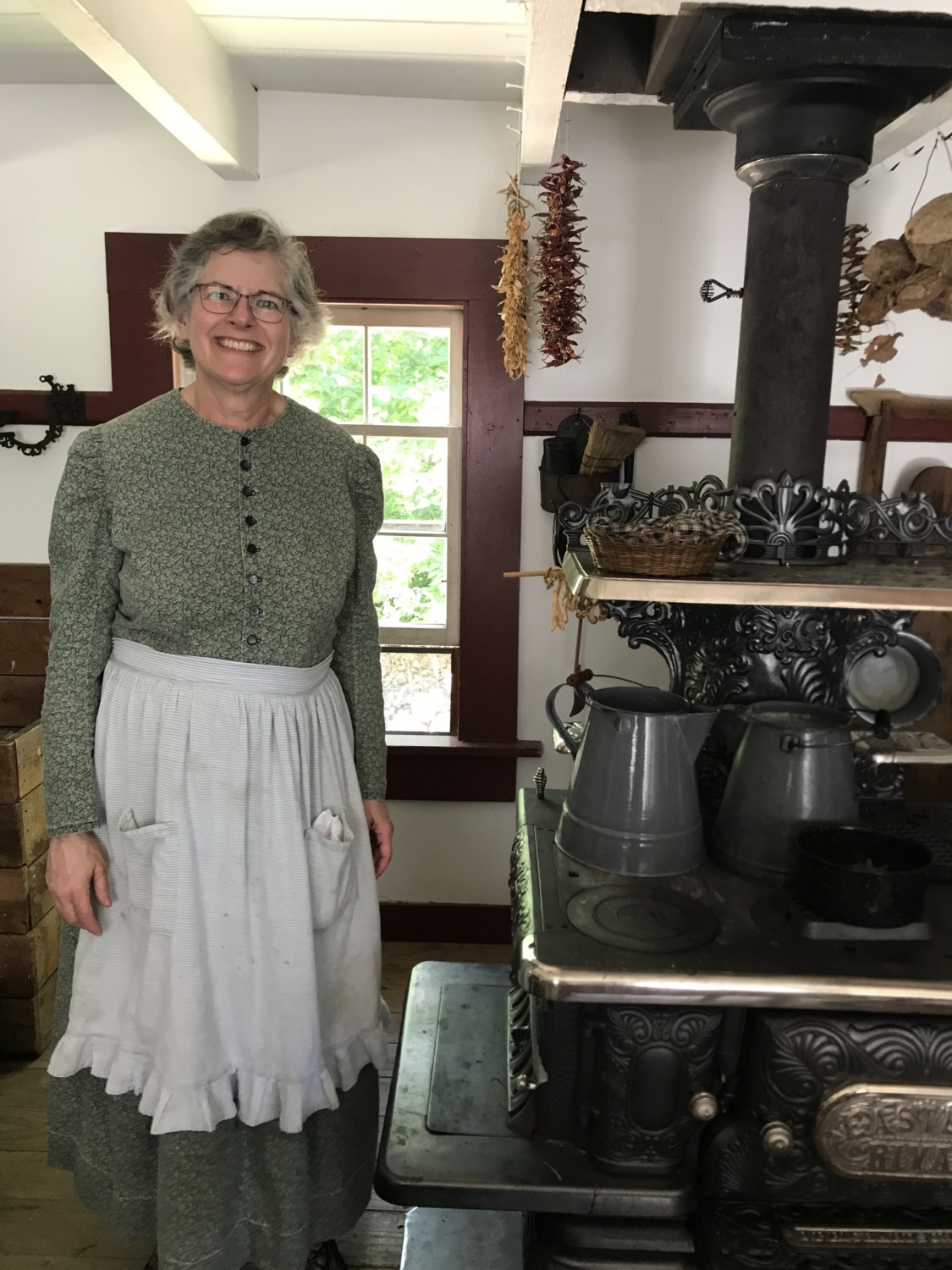
Tom spent most of his time with the horses. The horses are Percherons, the smallest kind of draft horses. They are very gentle and strong. Tom knows the names of the horses and can tell the four of them apart. Tom also learned how to use the manure spreader.
I asked him at lunch what he had been doing, and he told me “catching ducklings.” I thought he meant chasing them on the ground, but no, he literally meant catching them. The ducks built their nests in the hay mow and the ducklings, as soon as they can walk, fall out of the hay mow to the floor of the barn. One of them fell on Judy’s head – she is one of the big Percherons. Tom caught another one just as it was plummeting off the hay mow. He ended up gathering 16 ducklings, several of which he caught as they fell.
We are enjoying this new living history routine. I like the shorter days volunteering: six hours instead of eight. I am also enjoying learning new things and working with the other women. It is also nice to only volunteer once a week instead of having to work four days in a row.
I’m sure I will write more about Slate Run Farm as we continue volunteering. Chores change with the seasons so we still have plenty to learn. It will be fun to be there through the fall and into the winter. If you want to check out the farm on a day we are working, let me know. Our days change as our schedule and their needs change.

